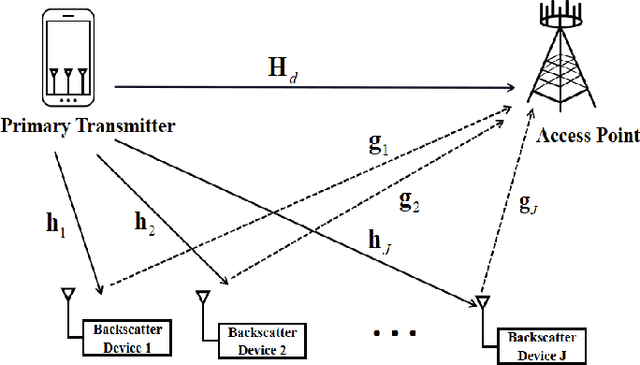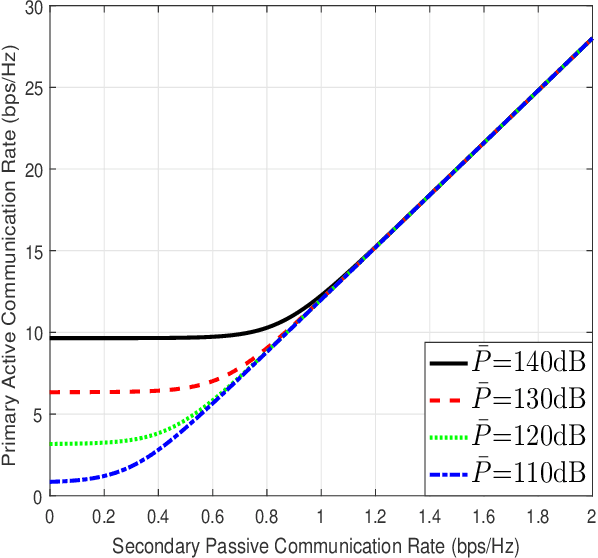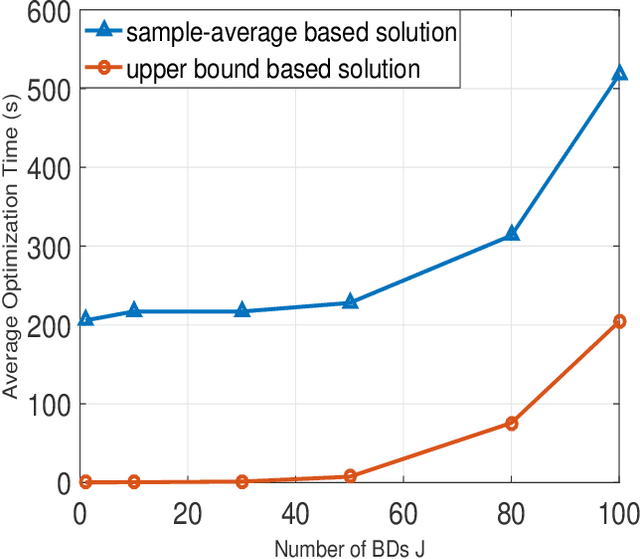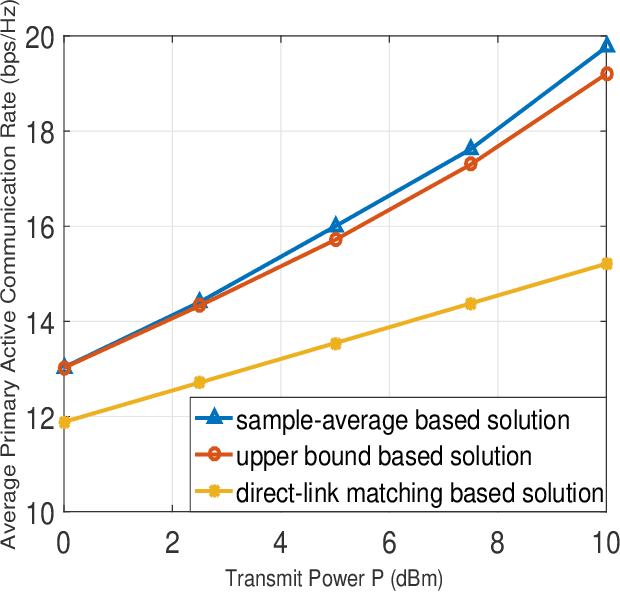MIMO Symbiotic Radio with Massive Passive Devices: Asymptotic Analysis and Precoding Optimization
Paper and Code
Jun 28, 2022



Symbiotic radio has emerged as a promising technology for spectrum- and energy-efficient wireless communications, where the passive secondary backscatter devices (BDs) reuse not only the spectrum but also the power of the active primary users to transmit their own information. In return, the primary communication links can be enhanced by the additional multipaths created by the BDs. This is known as the mutualism relationship of symbiotic radio. However, due to the severe double-fading attenuation of the passive backscattering links, the enhancement of the primary link provided by one single BD is extremely limited. To address this issue and enable full mutualism of symbiotic radio, in this paper, we study multiple-input multiple output (MIMO) symbiotic radio communication systems with massive BDs. We first derive the achievable rates of the primary active communication and secondary passive communication, and then consider the asymptotic regime as the number of BDs goes large, for which closed-form expressions are derived to reveal the relationship between the primary and secondary communication rates. Furthermore, the precoding optimization problem is studied to maximize the primary communication rate while guaranteeing that the secondary communication rate is no smaller than a certain threshold. Simulation results are provided to validate our theoretical studies.
 Add to Chrome
Add to Chrome Add to Firefox
Add to Firefox Add to Edge
Add to Edge